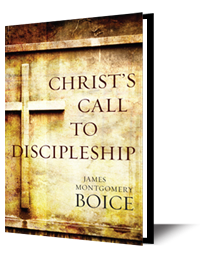Foremost among the important teachings of this chapter is Peter’s confession of Jesus as the Christ. As we read in yesterday’s lesson, Jesus approached the matter by asking two probing questions. We have already looked at the first of these questions: “Who do people say the Son of Man is?” Now Jesus asked his second question: “But what about you? Who do you say I am?” (v.15). It was at this point that Peter spoke for the rest and gave his classic answer: “You are the Christ, the Son of the living God” (v.16). Peter’s answer did two things, both forcefully. First, it identified Jesus as the Messiah, the one who was to reign forever on the throne of his great ancestor David. Second, and even more importantly, it identified Jesus as divine: “the Son of the living God.” It is that combination of ideas that makes Peter’s confession so important, for he was confessing that Jesus was no mere man but God himself come to save his people.
Jesus Christ is the very heart of Christianity. Christianity is Christ. But to know Jesus we must understand two great things about him: 1) who he is, and 2) what he did. In theological textbooks these two points are usually referred to as: 1) the person of Christ, and 2) the work of Christ. They emerge here, in Matthew 16, explicitly for the first time.
Let me close by going back to what Jesus told the Pharisees. He faulted them because they were unable to “interpret the signs of the times” (Matt.16:3). The right thing obviously is to interpret the times correctly, which leads me to ask: Are you able to interpret the times? Above all, are you able to interpret the times well enough to come to faith in Christ? Romans 13:11 uses this imagery when it says, “Do this, understanding the present time. The hour has come for you to wake up from your slumber, because our salvation is nearer now than when we first believed.”
We concluded yesterday’s lesson with a look at the various ways commentators have interpreted the nature of the Pharisees’ wrong teaching. What are we to make of these diverse interpretations? We need to take Luke’s explanation seriously. He is an inspired gospel writer, after all. But we also need to think of the context of the passage in Matthew, as D.A. Carson does. The only thing I would add to Carson’s analysis is that there is more to the context of these verses than chapter 16. There is also chapter 15 in which Jesus rebuked the Pharisees for their adherence to the traditions of men rather than the actual Word of God. They had been adding human legalisms to God’s revelation, which is why they were unable to accept the Lord when he came. He came with a gospel of pure grace, but they thought they had to earn their salvation by such legalistic behavior as keeping the Sabbath and a kosher diet. Jesus said of them,
What was Jesus thinking about as he and the disciples made their way across the lake again? It is perfectly clear from the story. He was still pondering the unbelief and hostility of the religious leaders. They should have believed on him but they would not. Moreover, they were doing what they could to keep other people from believing. We know Jesus was thinking along these lines, because he suddenly spoke up with a warning for the disciples. “Be careful,” Jesus told them, “be on your guard against the yeast of the Pharisees and Sadducees” (v.6). Jesus was warning them how dangerous the legalism of the Pharisees and the modernism of the Sadducees was.


















